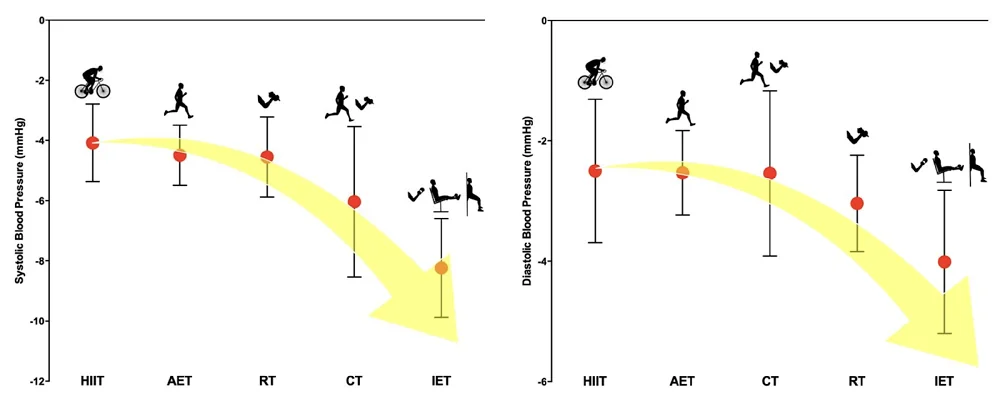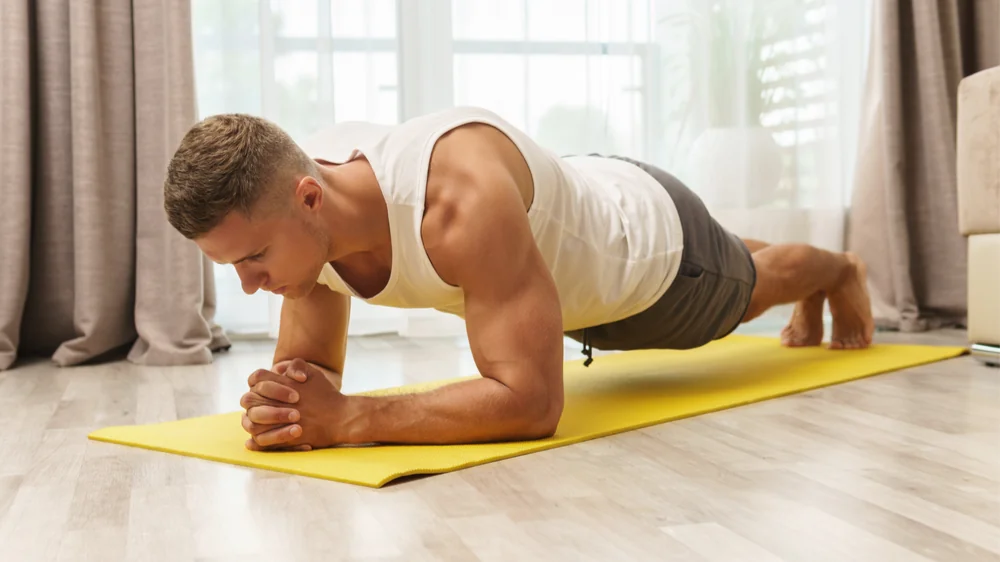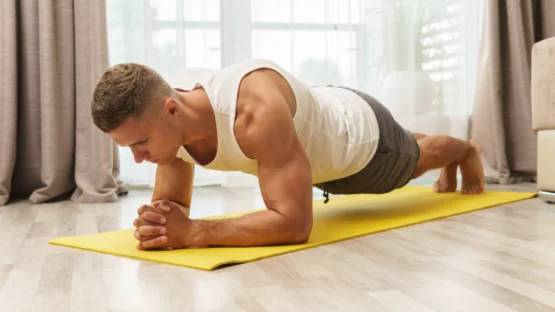In a new expansive meta-analysis comparing several types of exercise, isometric exercises, which include wall squats and planks, were linked to the biggest decrease in blood pressure [1].
Lowering the pressure
As is very well-known, exercise confers numerous health benefits, including age-related benefits, and it has been linked to lower cardiovascular and cancer risks, better metabolism, and slower cognitive decline [2]. However, there are substantial differences in how various types of exercise work. For instance, aerobic exercise is better for cardiovascular health, while resistance training is more effective in maintaining muscle mass, which is essential for staying active with age [3].
In this comprehensive meta-analysis encompassing 270 randomized clinical trials with more than 15,000 participants, the researchers attempted to rank several types of exercise by their effect on blood pressure, a central biomarker of cardiovascular health. Hypertension is a risk factor for heart disease and for metabolic and kidney problems [4]. With age, it gets increasingly harder to keep blood pressure at bay, and exercise is known to be one of the most effective interventions [5].
This meta-analysis considered several types of training, such as aerobic exercise training, dynamic resistance training, and isometric exercise training. It is one of the first such studies to include high-intensity interval training (HIIT), an increasingly popular type of physical activity, and the first one to include combined training. Moreover, those types of training were divided into subtypes, with activities such as walking, cycling, and running analyzed independently.
More results with less movement
The study confirmed that all types of exercise are effective in lowering both diastolic and systolic blood pressure. Unsurprisingly, the effect sizes were bigger in hypertensive cohorts than in cohorts with normal blood pressure at baseline. However, major differences were observed between various types of training, with isometric exercise training emerging as a clear winner.
Isometric exercise training is a type of strength training in which joint angle and muscle length do not change during contraction. This results in static tension that helps build strength and stability.
In this image, the types of exercise from left to right are high intensity interval training, aerobic exercise training, resistance training, combined training, and isometric exercise training:

The subtypes of isometric exercise included in the study were the handgrip, leg extension, and wall squat. All of them, including the handgrip, which is not a whole-body exercise, were more effective in lowering systolic blood pressure than any other non-isometric exercise. For diastolic blood pressure, running was the only type of exercise that outperformed isometric exercises. However, when considering both systolic and diastolic blood pressures, isometric exercise training reigned supreme.
Unfortunately, the review did not include the plank, an increasingly popular type of isometric exercise in which someone maintains a position similar to a push-up for a prolonged period, engaging multiple muscle groups, especially the core. However, there is no obvious reason for planking to be any less effective in lowering blood pressure than leg extensions or wall squats.
Feel the HIIT
These scientists note that HIIT, being a relatively new type of training, appeared in fewer studies and should be studied further. A subtype called sprint interval training (SIT) was responsible for the bulk of the effect, while aerobic interval training (AIT) failed to show statistically significant benefits. AIT is a popular form of HIIT, usually practiced as a series of four-minute bouts of intensive activity (walking or running) interspersed by four minutes of lower-intensity activity. In SIT, the intensive periods are shorter but much more strenuous (akin to 30-second sprints), requiring a push to the limit of ability.
This review joins the growing body of evidence documenting the benefits of isometric exercise training, suggesting that this type of physical activity, which is often neglected by athletes, should become an integral part of regular exercise.
In this systematic review and NMA, we analysed all relevant RCT data, involving 270 trials and 15?827 participants, to establish optimal exercise prescription practices in the management of resting arterial blood pressure. Pairwise analyses demonstrated a significant reduction in resting SBP and DBP following all exercise modes except AIT. All modes demonstrated substantially larger reductions in hypertensive cohorts than those with normal baseline blood pressure. As shown by the primary NMA, the rank order of effectiveness based on SUCRA values for SBP were IET ranked highest followed by CT, RT, AET and HIIT.
Literature
[1] Edwards, J. J., Deenmamode, A. H., Griffiths, M., Arnold, O., Cooper, N. J., Wiles, J. D., & O’Driscoll, J. M. (2023). Exercise training and resting blood pressure: a large-scale pairwise and network meta-analysis of randomised controlled trials. British Journal of Sports Medicine.
[2] Febbraio, M. A. (2017). Health benefits of exercise—more than meets the eye!. Nature Reviews Endocrinology, 13(2), 72-74.
[3] Schroeder, E. C., Franke, W. D., Sharp, R. L., & Lee, D. C. (2019). Comparative effectiveness of aerobic, resistance, and combined training on cardiovascular disease risk factors: A randomized controlled trial. PloS one, 14(1), e0210292.
[4] Buford, T. W. (2016). Hypertension and aging. Ageing research reviews, 26, 96-111.
[5] Pescatello, L. S., Franklin, B. A., Fagard, R., Farquhar, W. B., Kelley, G. A., & Ray, C. A. (2004). Exercise and hypertension. Medicine & Science in Sports & Exercise, 36(3), 533-553.




